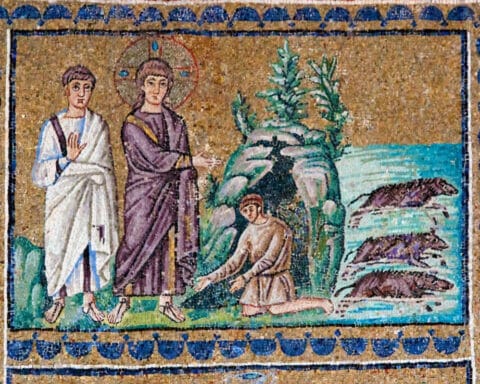
— Michael Valko, Noblesville, Indiana
Answer: These would not be the signs that an exorcist is instructed to look for. The old rite of exorcism stated three signs, and the new rite, introduced in 1999, added a fourth.
The signs are these: “Speaking a number of words in an unknown language or understanding someone speaking [in it]; making known distant and hidden events; showing strength beyond the nature of the individual’s age or condition. … [V]ehement aversion to God, the Most Holy Name of Jesus, the Blessed Virgin Mary and the Saints, the Church, the Word of God, sacred things and rites, especially sacramental ones, and from sacred images” (De Exorcisimis, No. 16).
These aversions and capacities are manifest in the person when in the possessed state. Those who are possessed are not in the possessed state all day, every day. Rather, they go in and out of the state, usually with increasing frequency, as the possession gets deeper.
To determine possession, the exorcist is instructed in the preface of the Rite of Exorcism (No. 14) not to easily believe a person is possessed. He should rule out natural causes to include physical and psychological causes as well as spiritual.
Usually, the exorcist will pray over someone thought to be possessed using certain selected prayers and look for the four signs.
Not finding sufficient cause to conclude possession does not mean there is no diabolical influence.
If one is not possessed, they may be suffering a lesser form of attack known as oppression. In such cases, deliverance prayers and ongoing spiritual care are called for rather than the rite of major exorcism.
Begotten from God
Question: What does it mean in the creed when it says Jesus was “begotten, not made”?
— Name withheld, Ava, Missouri
Answer: This is the creed’s way of emphasizing that Jesus is not a creature but is God, sharing fully in the one divine nature.
If a human person makes something, say a meal or a painting, we use created matter. And though the meal or painting says something about us who made it, the meal or painting is not human; it does not share in our nature. But if a human father begets a son or daughter, that child does share in the same human nature as the parents.
So the word “begotten” in the creed as a reference to Jesus means that he possesses the same divine nature as his Father and is not merely some thing or creature the Father made, which is distinct from him having something other than the divine nature. For example, you and I are creatures of God, because we do not have his divine nature. We are created by God, not begotten of him.
To emphasize the divinity for Jesus even further, the creed adds that Jesus is “consubstantial with the Father.” That is, he shares fully in the one divine substance we call God. The Father and Son are distinct as persons, but one in nature and substance.





